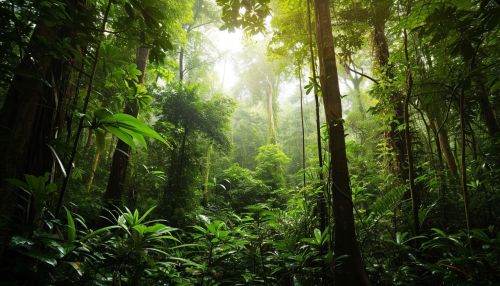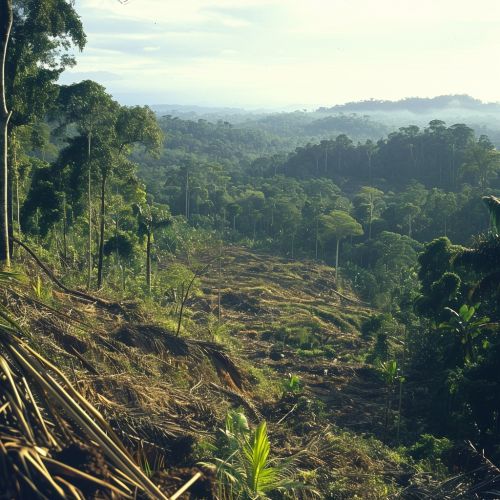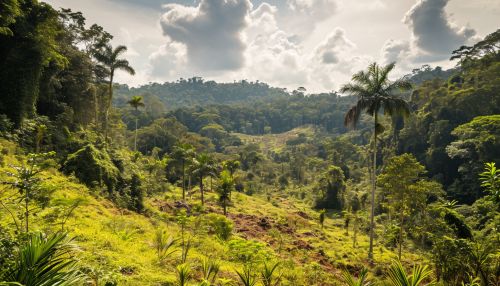Rainforests
Overview
Rainforests are a type of forest ecosystem characterized by high levels of rainfall, typically a minimum of 1750–2000 mm (68–78 inches) annually. They represent the world's richest and most productive biological systems and are home to more than half of the world's plant and animal species. Rainforests are crucial for maintaining global climate patterns and have significant cultural and economic value.


Classification
Rainforests are generally classified into two types: tropical and temperate rainforests.
Tropical Rainforests
Tropical rainforests, located near the equator, are characterized by high rainfall and temperatures above 18 degrees Celsius throughout the year. They are known for their immense biodiversity, with a higher number of species per area than any other ecosystem.
Temperate Rainforests
Temperate rainforests, found farther from the equator, also receive high rainfall but have cooler temperatures compared to tropical rainforests. They are characterized by the presence of large, evergreen trees, and a significant amount of mosses and ferns.
Biodiversity
Rainforests are renowned for their biodiversity. They provide a habitat for a vast array of species, many of which are not found anywhere else in the world. This includes a wide range of plants, mammals, birds, insects, and microorganisms.
Flora
The flora of rainforests is diverse and complex. The most significant plant types include emergent trees, canopy trees, shrubs, and ground flora. Many plants have adaptations to cope with the high rainfall and humidity, such as buttress roots, drip tips, and waxy leaves.
Fauna
Rainforests are teeming with animal life. They are home to a significant proportion of the world's bird, mammal, and insect species. Many of these animals have specialized adaptations for life in the rainforest, such as brightly colored plumage or skin for camouflage, and long, slender bodies for moving through the dense vegetation.
Ecosystem Services
Rainforests provide a range of vital ecosystem services. These include carbon storage, climate regulation, water cycle regulation, and the provision of food and medicinal resources. They also have significant cultural, spiritual, and recreational value.
Threats and Conservation
Rainforests face numerous threats, including deforestation, climate change, and biodiversity loss. These threats are often driven by global demand for commodities such as timber, palm oil, and beef. Conservation efforts are crucial to protect these unique and vital ecosystems.


